
TLDR: The phrase ‘penny wise and pound foolish’ is one that applies across much of the Government’s approach to spending and investment over the last 30 years. Both National and Labour Governments have kept sinking lids on real spending and investment on the likes of housing, transport, health and education spending since the early 1990s in a reflexive and deep-seated drive to lower taxes and Government debt to at or below 30% of GDP.
It seemed like a good idea at the time, especially if you believe previous generations (pre-1984) had ‘over-invested’ in public infrastructure and services and you believe (as most did in the early 1990s) that Aotearoa was likely to have a flat and ageing population for decades to come. After all, who doesn’t love low taxes and low interest rates, or avoiding the fear of some sort of public debt crisis? But this foregone spending has mounted up in the form of massive society-wide opportunity costs in the long-run, that have been squeezing through into low productivity growth, maxed-out hospital capacity and jam-packed prisons, especially with both parties actually engineering the fastest population growth in the developed world in the last decade through migration.
Eventually, the true costs in ‘pounds’ of those pennies saved through the 1990s, 2000s and 2010s is turning up through things breaking or not working because of a collective case of deferred maintenance and avoided investment. Our primary health care spending decisions are the latest case in point, including one publicised this week. It shows that for every $1 in prescription co-payments collected by the Government, there is an effective cost to the Government an $18 in extra hospital costs.
But the Treasury’s and Labour Goverment’s ingrained ‘penny wise and pound foolish’ approach to the opportunity costs remains locked in place, little changed from the previous National Government.
Paying subscribers can see more detail and analysis below the paywall fold and hear more in the podcast above. I’m asking subscribers below if they want this one opened up later today for public reading, listening and sharing. They support the public interest journalism I do on housing affordability, climate change and poverty reduction and get to say whether and when it should be made public. We’d love you to join us too.
$18 in savings foregone for every $1 in co-payments ‘earned’
A study of what happens when sick people don’t have to pay the current $5 co-payment for their prescriptions has found they are more likely to get their medicines and avoid having to go to hospital. For every 100 people who had to pay the $5 fee for a year, the study found they generated an extra 118 nights of hospital stays at up to $1,500 per night, over and above a comparable 100 people who didn’t have to pay.
That means that for those 100 people with chronic conditions such as diabetes, mental health issues, chronic obstructive pulmonary disease, the ‘lost’ $10,000 a year in co-payments (sick people have to pay for the first 20 prescriptions per year) actually cost an extra $177,000 in higher hospital costs. That means $1 earned is costing almost an extra $18 in hospital costs.
It seems an obvious conclusion that begs the question: why hasn’t the Government removed the $5 fee already? Surely Treasury has done a proper cost-benefit analysis of the cost of up to $1,500 per night in extra hospital days vs the foregone cost of the co-payments? Surely this is the sort of ‘Wellbeing’ analysis that Treasury would have done since its first Wellbeing Budget in 2019 and its adoption of the ‘Living Standards Framework’ earlier in the decade?
It turns out they haven’t, despite international evidence suggesting the potentially large scale of the opportunity costs of removing the fee and despite then-Health Minister David Clark asking about it in 2018. Actually, the Government chose not to do it in the 2020 Budget, in order to ‘save’ the $147 million a year in lost revenue and therefore foregone debt reduction. It turns out this penny wise and pound foolish decision not to remove it could be costing over $2.65 billion a year in extra hospital admission costs at a time when our hospitals and staff are stretched to breaking point.
Treasury has form on this. Back in 2012, the fee was increased from $3 to $5 per prescription by the Key-English National Government in an attempt to get the Budget back into Budget balance after heavy Christchurch earthquake spending. Treasury even recommended the fee be increased to $10 at the time to increase revenues, and therefore reduce foregone debt. It did that despite evidence from a Canadian study it would generate extra hospital stays when sick people couldn’t get their medicines.
Essentially, Treasury argued (and the Governments of the day in 2012 and 2020 have accepted) the benefits of Government debt reduction, in the form of slightly lower interest rates and higher asset values, were worth more than the unexamined but very real long-run costs of tens of thousands of sick people spending hundreds of thousands of extra nights in hospital.
So what’s the latest evidence?
So how do we know this now? It turns out a randomised and controlled study by University of Otago public health researchers that was published in a BioMed Central (BMC) paper last month found that the 469 people in their 2019/20 study who had to pay the $5 charge spent many more nights in hospital than the 591 who didn’t.
Of every 100 people who received free prescriptions in the study, 33 were admitted to hospital and stayed for 208 days. Of every 100 people who still had to pay the $5, 41 were admitted to hospital and stayed for 326 days. So the difference is an extra eight people in every 100 people spending a net extra 118 days in hospital per year. In the study, the Government would have lost up to $10,000 in forgone prescription fees, but had to pay an extra $177,000 for the extra hospital nights. That’s $18 saved for every $1 earned decision in any analysis of the costs and benefits of removing the fee.
Here’s more from the Hannah Martin article published in Stuff last night on the study:
Lead author Professor Pauline Norris, from Va’a o Tautai – Centre for Pacific Health, said the charge prevented some people getting their medication, leading to worse outcomes.
“They go without their medicines, and as a result their health problems get worse, so they need hospital care. This is bad for them, their whānau, and the health system.”
Māori and Pasifika much more affected by $5 fee
The latest NZ Health Survey for 2021/22 found that 3.3% of people reported not getting their medicines because of the $5 fee, with Māori and Pasifika adults being 3.3 times and 1.1 times respectively more likely not to collect a prescription due to the cost.
Co-author Dr Shirley Keown, from Turanga Health, said “prescription charges force people to choose between getting their medicines, feeding their whānau, paying the power bill or buying petrol for the car to get to work”.
Norris was “surprised at how much difference the free medicines made – it was really dramatic”.
“If a doctor thinks someone needs a medicine, and they want to take it, why do we let the lack of $5 stop them?”, Norris said.
The researchers recommended in their paper that Aotearoa follow the precedent of Scotland, Wales and Northern Ireland, which abolished prescription charges in 2011, 2007 and 2010, respectively.
Here’s the final recommendation in the paper:
Eliminating a small co-payment appears to have had a substantial effect on patients’ risk of being hospitalised. Given the small amount of revenue gathered from the charges, and the comparative large costs of hospitalisations, the results suggest that these charges are likely to increase the overall cost of healthcare, as well as exacerbate ethnic inequalities.
The study made clear it was designed to match the effects of such a policy intervention.
The key strength of the study is the comparison of a single simple intervention to usual care, mimicking a potential policy change and its incremental benefits. Additionally, although we did not recruit the sample size we aimed for, we were very successful in recruiting people facing socio-economic disadvantage and a significant burden of ill health. The inclusion criteria were designed to identify the people most likely to be hospitalised because of cost-related non-adherence. We think they are representative of the group of people who face significant social disadvantage and have poor health, but they were not intended to be representative of the New Zealand population as a whole.
So how much would be saved and lost in any change?
The last available Cabinet papers revealed in an OIA request last year show the Government estimated revenues of $147 million in the current 2022/23 fiscal year from the $5 fee. Given the $18 to 1$ benefit to cost ratio, removing the fee would generate savings of $2.65 billion.
So why hasn’t it been proposed and done already?
Papers released under the OIA show then-Health Minister David Clark asked in 2018 for advice on removing the fee. Officials pushed back then, and again in 2019, pointing out some pharmacy chains (Chemist Warehouse and Countdown Pharmacies) were choosing not to charge the fee, and were instead effectively using the fee (which still has to be paid to the Government) as a loss leader.
The heroes of this story are…Chemist Warehouse and Countdown
Essentially, officials were saying the health system could get some of the benefit of the removal of the charges without having to give up the revenues. It was saying let shareholders of the two chains be generous with their ‘loss leader’ profit sacrifice and avoid taxpayers losing the revenues.
The implication is that, in their desire to grab more market share, Chemist Warehouse and Countdown have done more to reduce the stress on our health system than Treasury or politicians of both parties.
This effect can be seen in the changing results for non-collection of prescriptions between the Health Surveys of 2016/17 and 2021/22. The percentage of respondents saying they didn’t pick up prescriptions because of the cost fell from 6.6% in 2016/17 to 3.3% in 2020/21. The Australian-based Chemist Warehouse launched into the New Zealand market in 2017 with its flagship discount being the removal of the $5 prescription charge. It still pays it to the Government, but does not charge customers. Countdown now has a similar policy for those pharmacies it has within its supermarkets. Chemist Warehouse now has 37 stores in Aotearoa and Countdown has 34.
The push-back led to the issue being kicked into a wider review of primary health care, which was in turn folded into the bigger health system reforms pursued by Clark’s successor Andrew Little, which turned into the dissolution of the DHBs and the creation of Te Whatu Ora and Te Aka Whai Ora (The Māori Health Authority).
Clark had another go in 2019 to push it through into an item in the 2020 Budget. Document six in the OIA documents shows a presentation in October 2019 that noted the Government was in favour of removing the fee. There was no cost-benefit analysis done, with the main focus on the need to compensate DHBs for the likely ‘loss’ of $133 million of fee revenue. Discussion of ‘Wellbeing’ or the ‘living standards framework’ was nowhere to be seen in the documents released.
Clark was reported in 2020 as saying the Government would not remove the fee. PharmacyToday-$$$
How Treasury viewed this issue
Detailed advice and Cabinet papers from 2011 and 2012 show how Treasury approached the suggestion of increasing the fee to save money in the wake of the quakes and National’s then-push for ‘zero’ Budgets. The fee was increased from $3 to $5 from the beginning of 2013, but Treasury actually recommended it be increased to $10 to ‘save’ up to $200m per annum.
Here’s what officials said at the time:
In the current fiscal environment the government needs to think carefully about which services it funds, and for whom. Increasing cost sharing is one way to shift a share of health costs from the public health system to those who use and can afford to pay for services. Cost sharing also sends a price signal to patients and can help improve the efficiency and effectiveness of the health system.
The government is operating under tight fiscal constraints and increasing cost pressures. In order to return to budget surplus by 2014/15 in accordance with the fiscal strategy, Ministers will need to make choices on spending priorities in Budget 2012.
In the very different fiscal environment the Government now faces it is appropriate to reconsider whether the benefits of universal subsidies outweigh the benefits of targeting scarce public funds to the areas and individuals/households with greatest need.
Treasury also knew about a 2001 Canadian study of the effects of co-payments on hospitalisation rates, but argued it was not directly comparable and have only small effects, even though the study had not focused on those with low incomes.
The detail above may seem overkill, but it gives you an idea of how these decisions are made and the incentives at play.
Governments of both colours have prioritised low debt, low interest rates and high asset values in the short term at the expense of people’s health and public health costs in the long run.
And everyone wonders why our productivity growth has been so stagnant.
Ka kite ano
Bernard





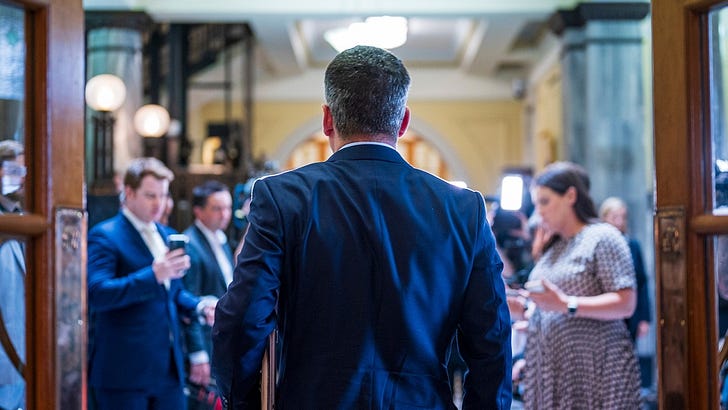

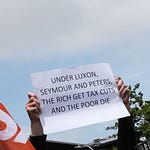
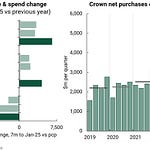
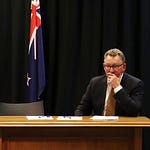
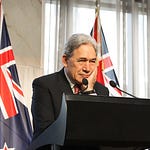


Share this post